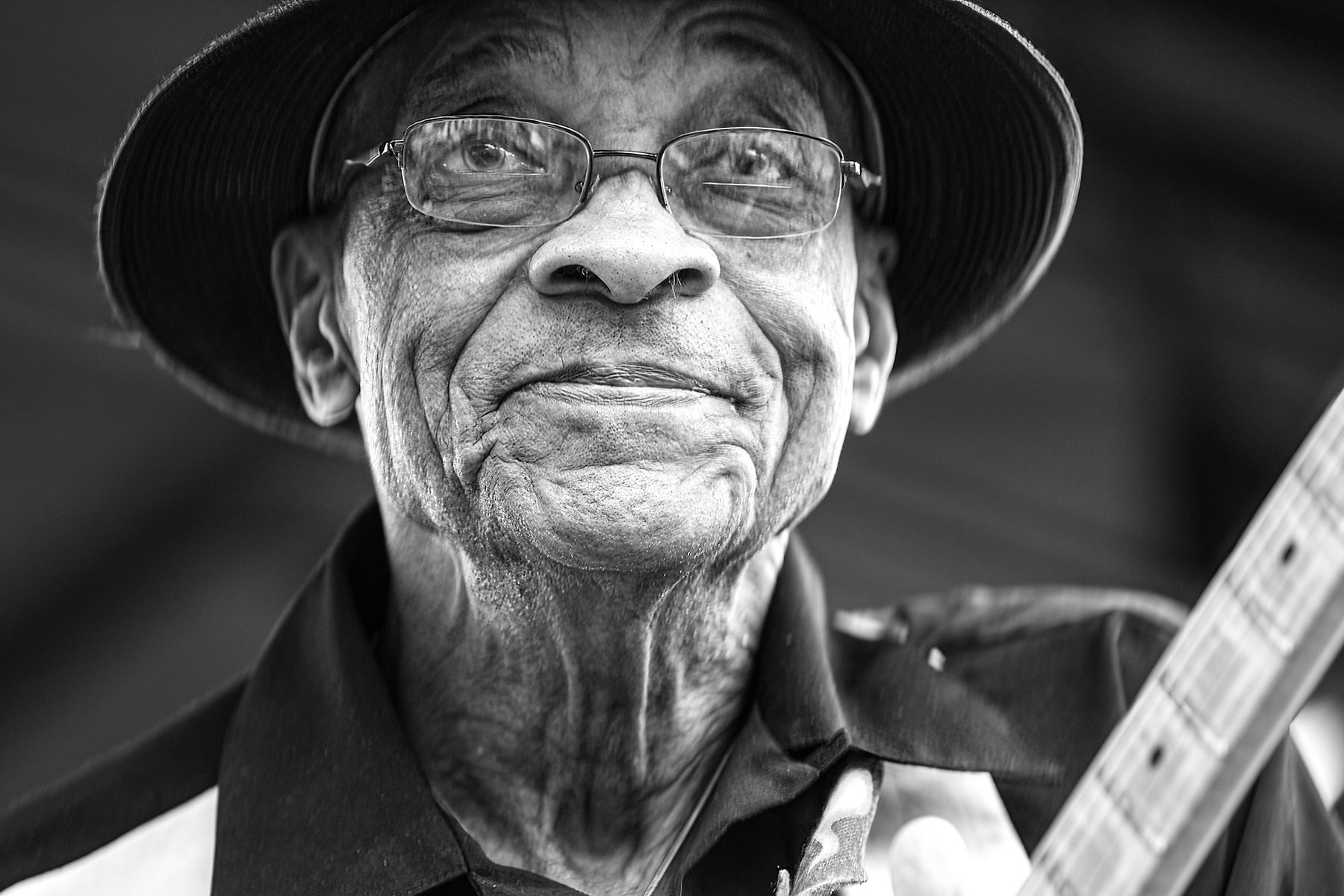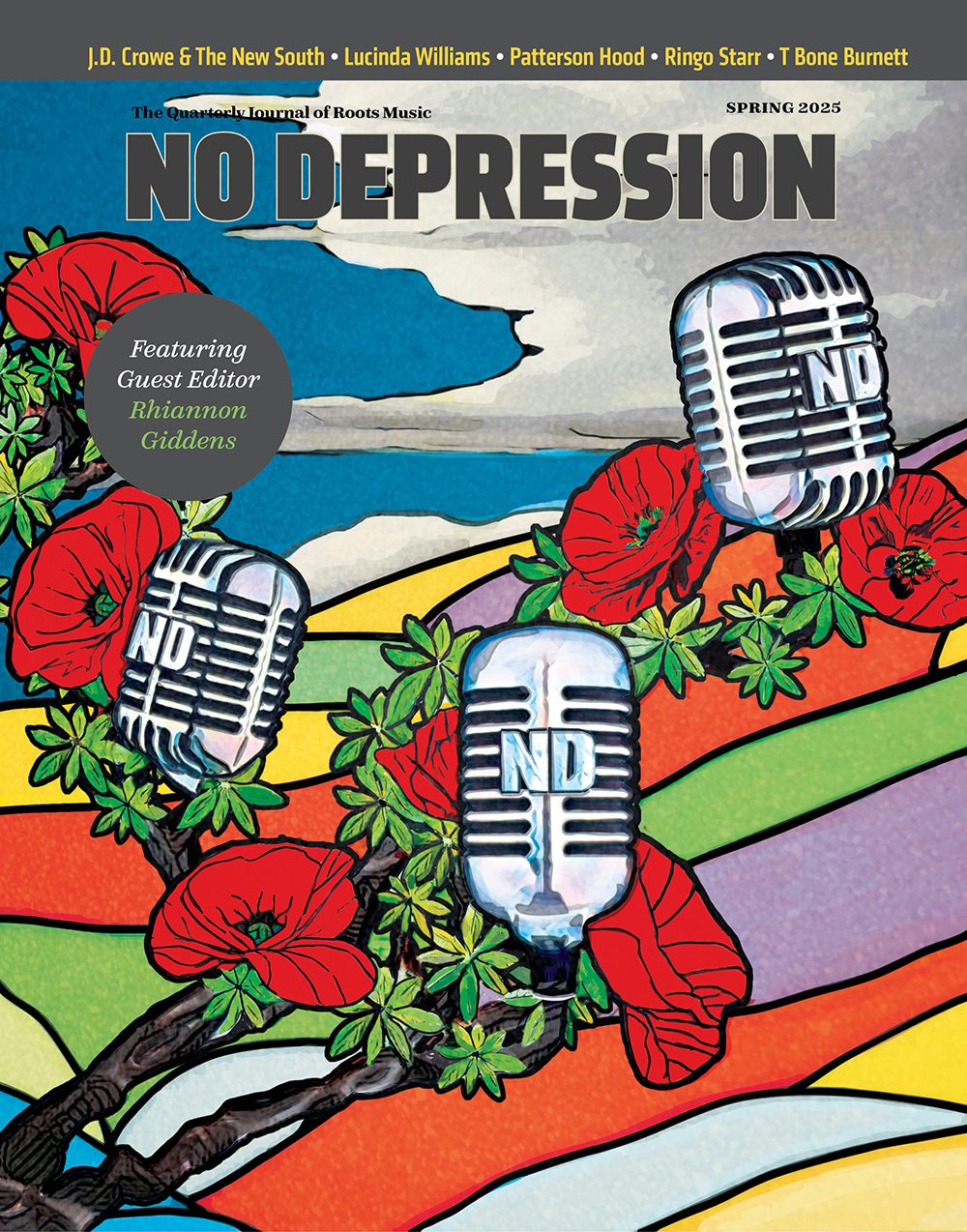THROUGH THE LENS: The Artistry of Black & White Roots Music Photography

Hubert Sumlin - Photo by Justin St. Clair
As with virtually all photographers of a certain age, I grew up with a Kodak Brownie camera and black-and-white film. College was, for many of us, the first opportunity to have access to a darkroom. Due to both the cost and complexity of the equipment needed to process and print color film, the darkroom was outfitted for B&W only. We quickly learned that the instructors, who were a generation or two older than us, were well steeped in B&W photography from not just practical consideration but also from an artistic perspective. While we learned the technical aspects of photography we also developed, if were were lucky, the ability to “look” at a subject, be it a person, a landscape, or inanimate objects, and the use of the most most important aspect of all the visual arts, light.
With our instructors’ guidance and reviewing the work of such masters as Henri Cartier-Bresson, Julia Margaret Cameron, Ansel Adams, and Dorothea Lange, we came to grasp that B&W photography can be far more expressionistic and three-dimensional than color. It’s an oversimplification, perhaps, but a color photograph permits you to see the surface of a subject, while a B&W photo can enable you to experience the subject’s spirit, to peer into the soul.
I asked the ND photographers what attracts them to B&W photography, and their responses can best be summed up in what Jim Brock told me: “As digital photography evolved, more creative tools emerged to enable B&W digital files to emulate film photos. Grain could be added, luminance adjusted to recover detail in shadows, the look of specific film stocks could even be mimicked. For me, the starkness and nuance of shooting performers in B&W is akin to the difference between experiencing acoustic and amplified music — there is no room to hide or embellish. The ability to convert a color image to B&W is also a huge advantage when shooting in poorly lit venues with highly saturated reds and blues, conditions often encountered in smaller clubs to mid-sized rooms.”
With this in mind, the photos in the gallery below amply demonstrate the ND photographers’ ability to go deeper into a performers’ art, thus creating their own.
Click on any photo below to view the gallery as a full-size slideshow.
- James Cotton – Photo by Jim Brock
- Yola – Photo by Mark J. Smith
- Hubert Sumlin – Photo by Justin St. Clair
- Buffy Sainte-Marie – Photo by Mark J. Smith
- Mavis Staples – Photo by Rick Davidson
- Emmylou Harris – Photo by Larry John Fowler
- Tanya Trotter of The War & Treaty – Photo by Jim Brock
- Buddy Guy – Photo by Kim Reed
- Charley Crockett – Photo by Justin St. Clair
- Valerie June – Photo by Mark J. Smith
- Sierra Ferrell – Photo by Liza Orozco
- Gary Clark Jr. – Photo by Jim Brock
- Bob Weir – Photo by Jim Brock
- Dale Watson – Photo by Larry John Fowler
- Neil Young – Photo by Jim Brock
- Charles Bradley – Photo by Justin St. Clair
- Drive-By Truckers – Photo by Larry John Fowler
- Leon Russell – Photo by Mark J. Smith
- Dave Alvin – Photo by Jim Brock
- Billy Strings – Photo by Rick Davidson
- Margo Price – Photo by Mark J. Smith
- Kamasi Washington – Photo by Jim Brock
- Carlos Santana – Photo by Kim Reed
- Pharoah Sanders – Photo by Jim Brock
- Buddy Guy – Photo by Justin St. Clair
- Steve Poltz – Photo by Mark J. Smith
- Amanda Shires – Photo by Mark J. Smith
- Sharon Jones – Photo by Jim Brock
- Cody Jinks – Photo by Liza Orozco
- John (JT) Thomas – Photo by Larry John Fowler
- Natalie Hagwood of Dear Darling – Photo by Larry John Fowler
- Chris Donohue of The Red Dirt Boys – Photo by Larry John Fowler
- Samantha Fish – Photo by Mark J. Smith
- Mark & Maggie O’Connor – Photo by Peter Dervin
- Shemekia Copeland – Photo by Kim Reed
- Albert Lee – Photo by Larry John Fowler








































